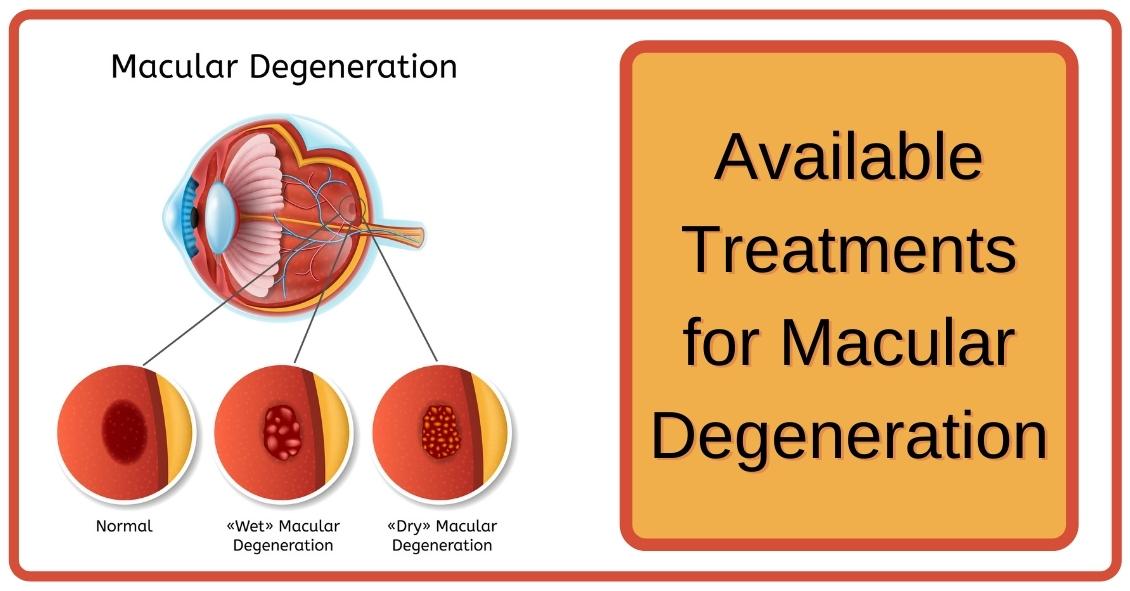
Age-related macular degeneration (AMD) is a prevalent condition that affects millions of people worldwide, especially those over the age of 50. AMD targets the macula, the small central part of the retina responsible for sharp, straight-ahead vision, making everyday activities like reading, driving, and recognizing faces challenging. Though there is no cure for AMD, modern advancements in age-related macular degeneration treatment offer a variety of solutions to slow progression and preserve vision.
In this blog, we will explore different age-related macular degeneration treatment options, the latest advancements in therapies, lifestyle choices that can support eye health, and the importance of early detection. This article will serve as a valuable resource for those seeking in-depth information about how to manage AMD effectively.
What is Age-Related Macular Degeneration (AMD)?
Before diving into treatment options, it’s essential to understand the types and stages of AMD. There are two main types:
- Dry AMD: The most common form, accounting for approximately 80-90% of cases. It occurs when the macula thins with age, leading to the gradual loss of central vision.
- Wet AMD: Though less common, wet AMD progresses faster and can cause significant vision loss. It involves abnormal blood vessels growing beneath the retina, leading to leakage, swelling, and scarring.
Early Detection and Diagnosis: A Crucial Step in AMD Management
Early detection is critical for managing AMD effectively. Regular eye exams, especially for individuals over 50, help in diagnosing AMD before significant vision loss occurs. Ophthalmologists typically use methods such as optical coherence tomography (OCT) and fundus photography to detect the disease. Once diagnosed, appropriate age-related macular degeneration treatment can begin.
Traditional Treatment Approaches for AMD
Dry AMD Treatment
While there is no definitive cure for dry AMD, treatment focuses on slowing its progression and maintaining quality of life. Key strategies include:
- AREDS and AREDS2 Supplements: The Age-Related Eye Disease Study (AREDS) and its follow-up, AREDS2, revealed that specific vitamins and minerals can reduce the risk of AMD progression in those with intermediate or advanced dry AMD. These supplements typically contain:
- Vitamin C
- Vitamin E
- Zinc
- Copper
- Lutein and zeaxanthin (AREDS2 formula)
It’s important to note that these supplements are not a cure, but they can help in slowing the progression of the disease, especially in individuals already diagnosed with intermediate or late-stage AMD.
- Diet and Lifestyle Changes: A diet rich in leafy greens, fish high in omega-3 fatty acids, and antioxidant-rich foods may support eye health and slow AMD progression. Maintaining a healthy weight, managing blood pressure, avoiding smoking, and wearing UV-protective sunglasses can further reduce risk factors.
- Monitoring with Amsler Grid: Patients with dry AMD are often advised to use an Amsler grid at home to monitor changes in their vision. This simple tool helps detect early signs of wet AMD.
Wet AMD Treatment
Wet AMD can lead to rapid and severe vision loss if left untreated. Thankfully, advancements in age-related macular degeneration treatment for wet AMD have brought more hope to patients. Current treatment options include:
- Anti-VEGF Injections: One of the most effective treatments for wet AMD is the injection of anti-vascular endothelial growth factor (VEGF) drugs, such as:
- Ranibizumab (Lucentis)
- Aflibercept (Eylea)
- Bevacizumab (Avastin, used off-label for AMD)
These drugs inhibit the growth of abnormal blood vessels in the retina and reduce leakage, preventing further damage to the macula. Regular injections, typically every 4-6 weeks, are required to maintain the effect. This form of age-related macular degeneration treatment benefits has proven highly effective in preserving vision for many patients.
- Photodynamic Therapy (PDT): Though used less frequently than anti-VEGF injections, PDT involves injecting a light-sensitive drug into the bloodstream, followed by activating it with a laser aimed at the retina. This combination helps to shrink abnormal blood vessels. PDT is often used for patients who do not respond well to anti-VEGF injections.
- Laser Therapy: This method involves using a high-energy laser to destroy abnormal blood vessels in the retina. However, this treatment is less commonly used today due to advancements in anti-VEGF therapies, which have shown better efficacy and fewer side effects.
Emerging Age-Related Macular Degeneration Treatment Options
Thanks to ongoing research, several promising new age-related macular degeneration treatment options are currently in development. Here’s a look at some of the latest advancements:
- Gene Therapy: Gene therapy is emerging as a potential game-changer in treating AMD. This cutting-edge approach involves delivering healthy copies of genes directly to the retina to correct underlying genetic issues that contribute to AMD. While gene therapy for AMD is still in experimental stages, early clinical trials have shown promise, particularly for wet AMD.
- Stem Cell Therapy: Stem cell research offers another exciting avenue for AMD treatment. Scientists are investigating the use of stem cells to regenerate damaged retinal cells. The potential to restore lost vision in individuals with advanced AMD through stem cell transplantation is a promising frontier, though more research is needed before it becomes widely available.
- Implantable Devices: Tiny, implantable devices like the retinal prosthesis or miniature telescopic lenses are being developed to help patients with advanced AMD regain some degree of functional vision. These devices magnify and enhance vision by refocusing light onto healthy areas of the retina, allowing patients to regain some ability to see central objects more clearly.
- Longer-Lasting Anti-VEGF Treatments: One of the challenges with current anti-VEGF therapy is the need for frequent injections. Researchers are working on developing longer-lasting drugs, as well as sustained-release implants, which could reduce the number of injections required for maintaining vision. The Port Delivery System (PDS) with ranibizumab, for example, is a refillable eye implant currently undergoing clinical trials that may significantly reduce the burden of regular injections for wet AMD patients.
Lifestyle and Preventive Measures to Support Age-Related Macular Degeneration Treatment
While medical treatments play a critical role in managing AMD, there are several lifestyle changes individuals can make to support their treatment and overall eye health.
- Diet and Nutrition: As mentioned earlier, a diet high in omega-3 fatty acids, antioxidants, and vitamins can support macular health. Foods rich in lutein and zeaxanthin, such as spinach, kale, and other leafy greens, may also provide protection against AMD.
- Exercise: Regular physical activity has been shown to improve overall health and may help in reducing the risk of developing AMD or slowing its progression. Exercise improves circulation, which may benefit the delicate tissues in the eyes.
- Quit Smoking: Smoking is one of the most significant risk factors for AMD. Smokers are four times more likely to develop AMD compared to non-smokers. Quitting smoking can significantly reduce the risk and slow the progression of AMD for those already diagnosed.
- Sun Protection: Prolonged exposure to UV light can damage the retina and increase the risk of AMD. Wearing sunglasses that block 100% of UV rays and using wide-brimmed hats can offer extra protection when outdoors.
- Routine Eye Exams: Regular check-ups with an eye specialist are essential for catching AMD early and monitoring its progression. Early intervention often results in more successful age-related macular degeneration treatment outcomes.
Living with AMD: Coping and Support
While age-related macular degeneration can cause vision loss, many patients continue to lead fulfilling lives with the help of adaptive technologies and support systems. Low-vision aids, such as magnifying lenses, specialized reading lamps, and large-print books, can make daily tasks more manageable. Occupational therapy for low vision can also help patients adjust to living with AMD by teaching new strategies for performing everyday activities.
Organizations like the Macular Society and American Macular Degeneration Foundation (AMDF) provide valuable resources, support groups, and information to individuals affected by AMD. Connecting with others who understand the challenges of AMD can be a tremendous source of emotional support.
Conclusion
Age-related macular degeneration treatment has come a long way, with new advancements offering hope to those affected by this condition. While there is no cure for AMD, a combination of medical treatments, lifestyle changes, and regular monitoring can slow its progression and preserve vision. With ongoing research and innovation, the future of AMD treatment looks promising.
If you or someone you know is experiencing symptoms of AMD, it is crucial to seek medical attention early and explore the best treatment options. Early detection and proactive care remain the key to managing this common eye condition effectively.





